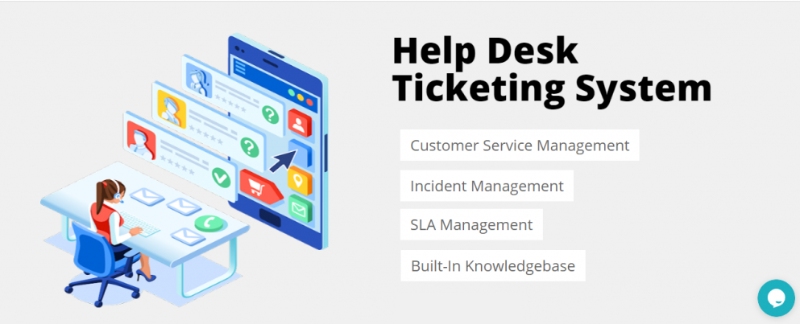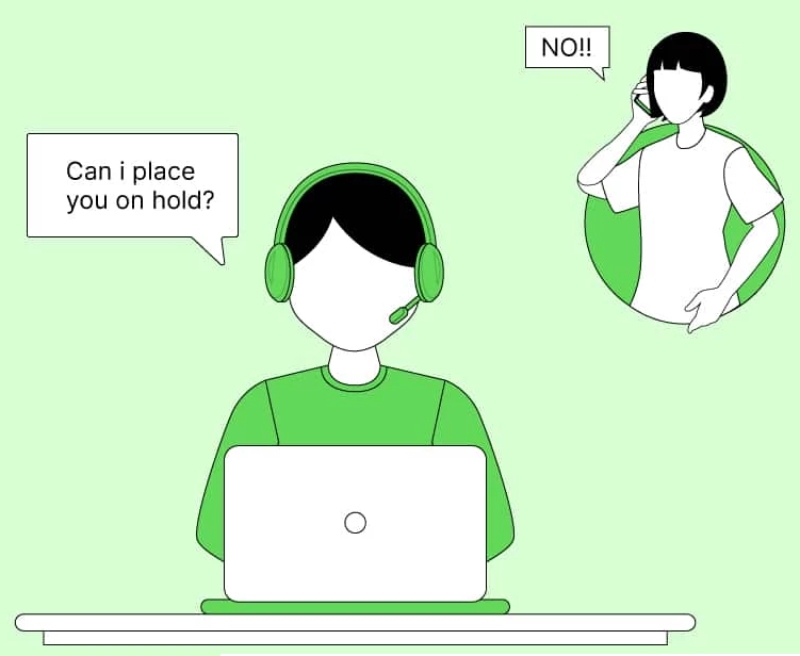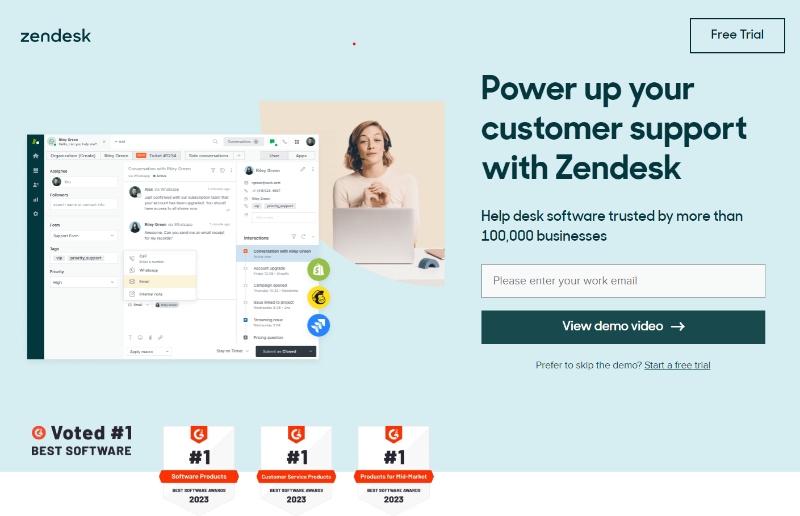Introduction
"Have you ever wondered how your SaaS business could better manage and optimize inbound calls? What if the secret to increased customer satisfaction and retention lies in improving the experience of your inbound callers?
In the fast-paced world of SaaS, where the product is intangible and support is often remote, every inbound call represents a crucial touchpoint, an opportunity to enhance customer relationships and reinforce your brand value. For any SaaS business aspiring to thrive, inbound calls aren't just about resolving issues; they're about delivering a stellar caller experience that drives customer loyalty and propels business growth.
This is why call center customer services should prioritize improving the customer experience wherever possible.
One effective way to do this is by ensuring your customer service and support teams are properly trained on every new process or software update. Tools like ClickLearn can automate the creation of interactive training materials and walkthroughs, helping SaaS teams onboard faster and maintain consistent service quality across all inbound call interactions.

This article will enlighten you on the crucial role of inbound calls in SaaS businesses and guide you through practical and innovative strategies to enhance your inbound caller experience. It's useful for customer service teams aiming to skyrocket their customer return rates.
Whether you're a startup finding your feet right after the discovery phase or with dedicated contact centers aiming to refine your processes, you have a wealth of actionable insights. So, are you ready to transform your inbound calls into strategic assets? Let's dive in!
For starters, let us begin by understanding the basics, such as who an inbound caller is and what an inbound call is.
Understanding inbound call/caller
An inbound call is a telephone call initiated by a customer or client to a company or organization, typically to make inquiries, seek assistance, or request services. This could include technical support, billing inquiries, product or service information, account management, or any other customer service function.
An inbound caller, therefore, is the individual or party who initiates this inbound call at the beginning of the customer journey. They may be current or potential customers, partners, or stakeholders contacting a company's call center or customer service department for various reasons, ranging from troubleshooting product issues to seeking information about products or services.
Inbound calls are usually reactive in nature. The customer service representative or agent responds to the customer's needs or queries, as opposed to outbound calls, where the representative initiates the call to customers, often for sales or survey purposes.
Effectively managing inbound calls is an essential aspect of customer service, and many businesses have strategies in place to reduce wait times, improve call handling efficiency, and ensure high-quality service for these types of calls.
Pros of Improving Customer Experience in Call Centers
An excellent inbound caller experience significantly contributes to the overall customer experience and can positively impact a company's reputation and customer loyalty. Here's how:
- First Impressions: For many customers, an inbound call may be their first direct interaction with your company. A positive experience can set the tone for future interactions and establish a strong foundation for a long-term customer relationship.
- Resolution Efficiency: Efficiently addressing and resolving a customer's queries or issues can lead to higher customer satisfaction. Quick response times, knowledgeable representatives, and a streamlined resolution process show customers that you value their time and are committed to meeting their needs.
- Personalized Service: A good inbound caller experience often includes personalized service. Understanding and addressing the caller's specific needs can make them feel valued and understood, enhancing their overall experience.
- Building Trust: Effective handling of inbound calls helps build customer trust. When they know they can rely on you to provide timely, helpful support, they will likely remain loyal to your brand.
- Feedback Opportunities: Inbound calls also provide an opportunity to gather valuable feedback through customer feedback text analytics. Listening to your customers' experiences, concerns, and suggestions can help you improve your products, services, and customer support, contributing to an improved overall customer experience.
- Brand Advocacy: A satisfied customer, thanks to a tremendous inbound caller experience, is likelier to become a brand advocate. They can spread positive word-of-mouth, recommend your company to others, and contribute to a positive brand image. SaaS (Software as a Service) businesses face several unique challenges when handling inbound calls, which can directly impact the caller experience.
Challenges Surrounding Inbound Calls
High Call Volume

One of the main challenges is managing a high volume of inbound calls, especially during peak times or product launch phases. This can lead to long wait times and frustrate customers.
[YouTube embed https://www.youtube.com/watch?v=2Y5pwUiRD2g]
Technical Complexity:
SaaS products often involve complex technical details. If support staff lacks technical knowledge, it can be difficult for them to resolve customer queries efficiently, leading to a poor caller experience.

Language and Cultural Barriers:
If a SaaS company has a global customer base, language and cultural differences can pose communication challenges. Miscommunication can lead to unresolved issues and a frustrating experience for callers.

Resource Constraints:
SaaS companies often operate on a subscription model, focusing on scale, so they may face resource constraints in their customer service departments. This could lead to lesser staff to handle inbound calls, longer response times, and diminished caller experience.
Poor Technical Service:
The systems used by call handlers such as SaaS, CRM and even ChatBots require a stable internet connection. Intermittent drops from an unreliable service not only looks unprofessional but will cost in terms of customers who see your service as poor. Googling “internet providers near me” is one way to find and compare some of the best for personal and/or business use.
Issue Tracking and Resolution:
Without a robust CRM or ticketing system, tracking customer issues and ensuring their timely resolution can be challenging. Callers might have to repeat their issues multiple times or experience delays in resolving them.

Maintaining Personalized Service:
As SaaS companies grow, maintaining personalized customer service can become challenging. Impersonal interactions can lead to a disappointing caller experience.
The above challenges can significantly impact the caller experience by leading to longer wait times, ineffective problem-solving, communication gaps, and impersonal service. These issues can result in customer dissatisfaction, damage the company's reputation, and even lead to customer attrition. The way a company handles inbound calls can significantly affect a customer's perception of the brand, their likelihood to do business with the company again, and their propensity to recommend the company to others. Ensuring a positive inbound caller experience is therefore crucial for enhancing overall customer experience.
Optimizing the inbound caller experience
Optimizing the inbound caller experience is crucial for any business aiming to boost customer satisfaction and loyalty, and many turn to call center outsourcing companies to achieve this. Here are some strategies to achieve this:
Invest in Staff Training:
Your customer service representatives are the frontline of your business. Regular training should be provided to ensure they understand your product or service and are equipped with the skills needed to handle difficult situations or complaints. This will result in a more professional and efficient caller experience. Effective call center management involves continuous investment in training to maintain a skilled workforce and improve the overall call center customer experience.

Implement a Robust CRM System:
Customer Relationship Management (CRM) systems can provide representatives with a customer's entire interaction history, allowing for personalized and informed service. It also helps track, manage, and resolve customer issues effectively. Harnessing the capabilities of the CRM should be included in the training of contact center agents.

Reduce Hold Times:
Long hold times can frustrate callers and negatively impact their experience. This can be mitigated by improving staffing levels during peak times, implementing a call back system, or using interactive voice response (IVR) systems to manage call flow efficiently. Incorporating a flash call system can further improve efficiency by verifying customers instantly without requiring them to wait on hold.
Since only a limited number of call center agents can work at a given time, an external solution like IVR is a great way to improve hold times.

Use IVR Systems Wisely:
While IVR systems are valuable for managing calls, they should be used wisely in your customer experience strategy. Too many options or complicated menus can confuse and frustrate callers.

Keep your IVR menus simple, clear, and concise to enhance the caller experience.
Prioritize First Call Resolution:
Aim to resolve customer issues during the first call itself. This not only improves customer satisfaction but also reduces operational costs. If immediate resolution isn't possible, ensure you have a process in place for timely follow-up.

Multilingual Support:
If you have a global customer base, offering multilingual support can significantly enhance the caller experience by overcoming language barriers. You may also consider implementing omnichannel contact center services to provide a seamless experience across multiple communication channels.

Collect and Utilize Feedback:
Regularly collect feedback from your customers about their call experience. This feedback can provide valuable insights to improve your service. Using the best QR code generator, businesses can create QR codes that link directly to feedback forms, making it easier for customers to share their thoughts instantly. Follow up on the feedback and let your customers know their opinions are being taken seriously. If it's appropriate, call back to make the feedback personal as well.
Personalize the Experience:
Use your CRM system to deliver a personalized, positive customer experience. Recognize the caller by name, understand their history with your business, and provide solutions tailored to their specific needs. Give every customer a great experience via curation to retain them.
Foster a Positive Company Culture:
Happy employees are more likely to provide better customer service. By fostering a positive company culture and treating your employees well, you can ensure they convey positivity in their interactions with callers.
Regularly Review and Improve:
Continuously review your call handling processes and performance. Analyzing a call summary can offer insights into recurring issues, helping you identify patterns and areas for improving customer service. Use metrics like call resolution rates, average call handling time, and customer satisfaction scores to identify areas for improvement.
Chatbots and AI
Chatbots, AI voice agent and AI assistance can significantly elevate the inbound call experience. They can handle routine inquiries, freeing up human agents for more complex issues. This reduces wait times, a key factor in customer satisfaction.
AI systems can identify the purpose of the call and route it to the most suitable agent, enhancing efficiency and issue resolution rates. They can also provide real-time assistance to agents, suggesting responses or actions based on the context of the call.
This ability to resolve customer issues as fast as possible is pivotal to a great call center experience. It also helps with customer retention, so it's a win-win!

Furthermore, AI can be used to analyze calls, identify trends, and provide insights to improve future interactions.
Chatbots offer 24/7 availability, allowing customers to get instant responses anytime. Unlike human agents, they can handle multiple inquiries simultaneously, leading to better scalability. Finally, chatbots can provide a personalized experience by using data from past interactions stored in the CRM system. They can greet the caller by name, understand their history, and tailor the interaction accordingly, creating a more engaging and satisfactory experience.
These strategies can help optimize the inbound caller experience, leading to improved customer satisfaction, increased customer loyalty, and a better reputation for your company.
Learn Tips to Improve from Zendesk!
A prominent example of a SaaS company that has significantly improved its inbound caller experience is Zendesk.
Zendesk is a global SaaS company that provides a suite of customer service tools. As they serve a diverse range of clients worldwide, optimizing the inbound caller experience has been a vital aspect of their customer support strategy.

To provide a superior inbound caller experience, Zendesk has implemented several effective strategies:
- Zendesk utilizes its own CRM software to manage customer relationships effectively. This system allows them to track customer interactions and history, ensuring that each inbound caller receives personalized and informed service.
- Recognizing that customers may prefer different channels for communication, Zendesk provides multi-channel support, including voice, email, chat, and social media. This ensures that customers can choose their preferred method of contact.
- To overcome language and cultural barriers, Zendesk provides support in multiple languages, ensuring that callers from different regions have a seamless experience.
- Zendesk invests heavily in staff training to ensure that all representatives are well-versed with their product suite and can handle complex customer queries effectively. They also emphasize empathy and active listening skills, enhancing the overall caller experience.
- Zendesk uses AI to assist in managing inbound calls. Their system can identify the purpose of the call and route it to the most appropriate representative, reducing wait times and improving issue resolution efficiency.
- Zendesk takes customer feedback seriously and uses it to refine its caller experience continually. They gather feedback through various channels and use this data to improve their services and products.
Through these initiatives, Zendesk has managed to create a positive and efficient inbound caller experience, resulting in high customer satisfaction rates and strong customer loyalty. This success demonstrates the value of prioritizing the caller experience in a SaaS business.
Conclusion
Optimizing the inbound caller experience is paramount for SaaS businesses aiming to boost customer satisfaction and loyalty. By implementing effective strategies such as investing in staff training, employing robust CRM systems, leveraging AI and chatbots, and consistently gathering and acting upon customer feedback, SaaS companies can ensure that their inbound callers have a satisfying and productive experience.
Remember, a satisfied and returning customer not only stays loyal but also becomes a brand ambassador, sharing their positive experiences with others. The phone line is often the frontline of your customer service, so make sure it's not a weak link.
And to end on a light note, here's a little joke: Why don't we ever tell secrets on the phone? Because it's always wired!
However, we have spilled all our secrets here. So, keep the conversation going, keep delivering great customer experiences, and watch your SaaS business thrive!


